
Do you have a question about the Gree GEH12AA-K6DNA1A/I and is the answer not in the manual?
| Cooling Capacity | 12000 BTU/h |
|---|---|
| Heating Capacity | 13000 BTU/h |
| Energy Efficiency Ratio (Cooling) | 3.21 |
| Coefficient of Performance (Heating) | 3.61 |
| Refrigerant | R32 |
| Indoor Unit Dimensions (HxWxD) | 289x845x209 mm |
| Outdoor Unit Dimensions (HxWxD) | 596x848x320 mm |
| Operating Temperature (Heating) | -7-24°C |
| Type | Split Type |
| Power Supply | 220-240V, 50Hz |
Indicates a hazardous situation resulting in death or serious injury if not avoided.
Indicates a hazardous situation resulting in death or serious injury if not avoided.
Indicates a hazardous situation resulting in minor or moderate injury if not avoided.
Safety measures for R32, including fire and repair precautions.
Warnings on sockets, power disconnection, and cord safety.
Emphasizes the need for qualified personnel for maintenance and repair.
Actions for overheating, leaks, or strange sounds.
Stressing the need for qualified installers for safe and correct installation.
Following local and national safety standards for installation.
Ensuring proper grounding and using specified power cords.
Prohibition of power connection before full installation.
Emphasizing professional installation of grounding devices.
Verifying voltage, frequency, and using correct fuses.
Checks for when the unit does not turn on.
Checks for weak cooling performance.
Guidelines for drain pipe setup, slope, and insulation.
Methods for fastening the unit during floor or wall installation.
Securing the wall mounting plate correctly.
Detailed instructions for preparing pipe ends for connection.
Critical precautions for flaring, including material usage.
Ensuring proper torque for leak prevention.
Methods to verify there are no refrigerant leaks.
Step-by-step guide for connecting wires to terminals.
Warnings against improper wiring and unauthorized parts.
Using tools to create proper flare ends.
Procedures for joining the pipes between units.
Requirements for personnel performing installation and maintenance.
Table specifying required room sizes based on refrigerant charge.
Correct methods for filling refrigerant and labeling the system.
Ensuring only specified refrigerant is used.
Using the specified refrigerant as per nameplate.
Step-by-step guide for recovering refrigerant.
Guidelines for wiring, avoiding extension cords, and proper connections.
Following regulations for power supply and wiring.
Details on proper grounding for electrical safety.
Procedures for installing the base supports.
Placing and fastening the unit to its base.
Steps for joining the pipework between units.
Connecting power and signal cables.
Steps to remove air and moisture from the refrigerant circuit.
Using tools or soap water to find leaks.
Checklist of items to confirm after installation is complete.
Steps to run and test the air conditioner.
Using specialized tools to create the flare.


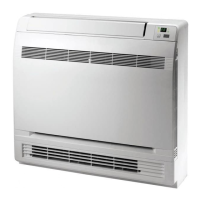


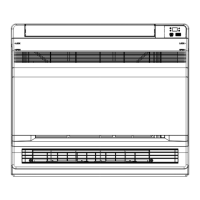


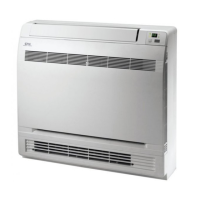
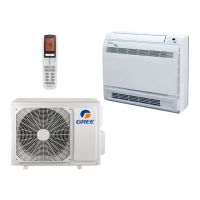
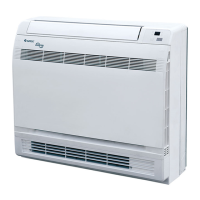

